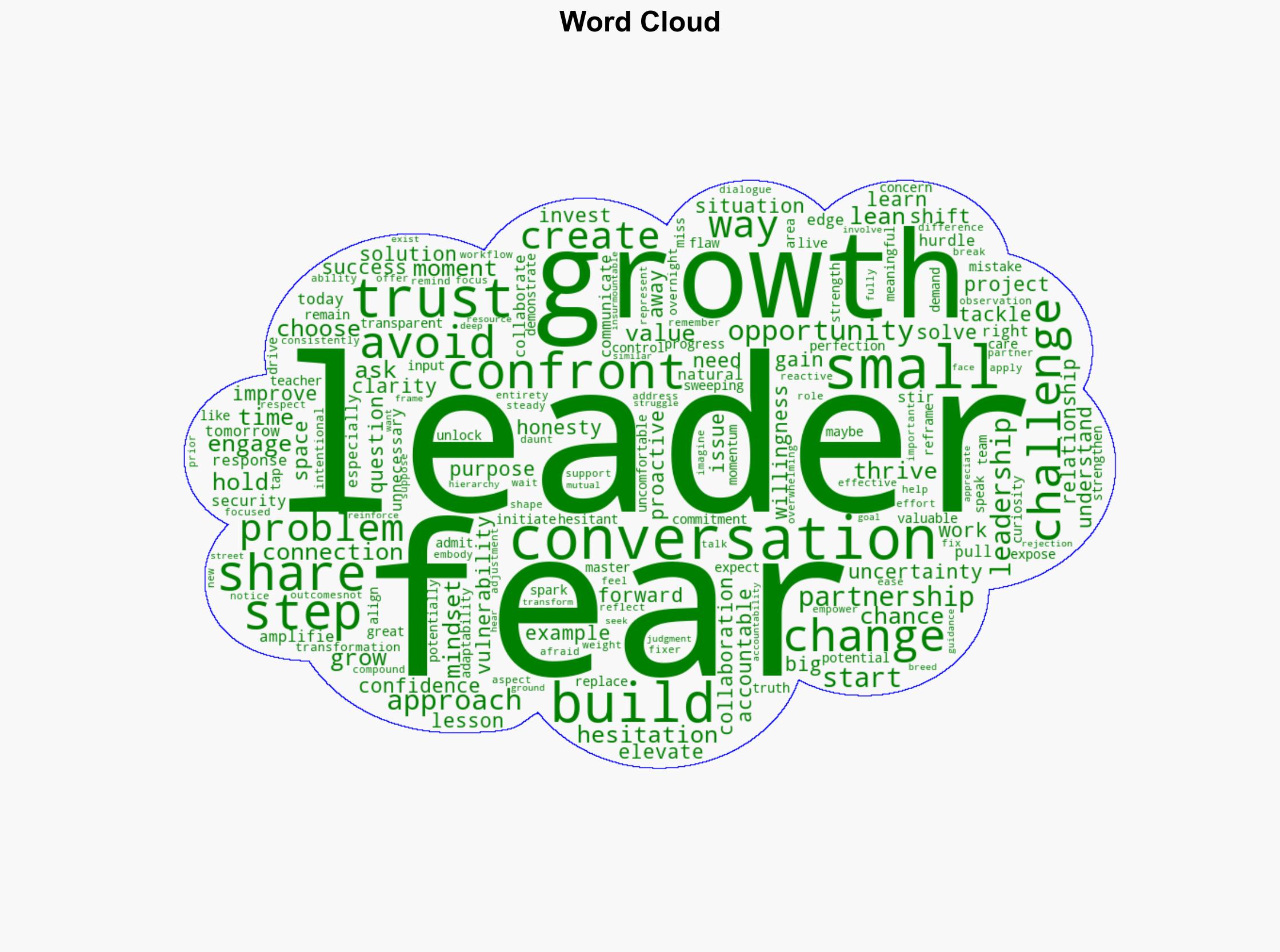3 Ways To Confront Fears With Your Leader – Forbes
Published on: 2025-04-05
Intelligence Report: 3 Ways To Confront Fears With Your Leader – Forbes
1. BLUF (Bottom Line Up Front)
The report identifies the importance of confronting fears in leadership dynamics to foster growth and trust. Key findings suggest that avoiding fear can amplify problems, while confronting it can lead to improved communication, collaboration, and project outcomes. Recommendations focus on initiating small, intentional conversations to build momentum and trust with leaders.
2. Detailed Analysis
The following structured analytic techniques have been applied for this analysis:
General Analysis
The analysis highlights the natural human response to fear and its potential to hinder progress within organizational structures. It emphasizes the need for transparency and accountability in leadership to align values and drive meaningful conversations. The report suggests that leaders who thrive on trust and adaptability can better harness the potential of their teams by reframing fear as an opportunity rather than a barrier.
3. Implications and Strategic Risks
The avoidance of fear in leadership can lead to increased uncertainty and stagnation in decision-making processes. This poses risks to organizational effectiveness and can impact national security and economic interests if not addressed. The trend of fear avoidance may result in missed opportunities for growth and innovation, potentially affecting regional stability and competitive advantage.
4. Recommendations and Outlook
Recommendations:
- Encourage leaders to engage in open dialogues about fears and challenges to build trust and clarity.
- Implement training programs that focus on vulnerability and adaptability in leadership.
- Promote a culture of continuous improvement through small, consistent actions rather than sweeping changes.
Outlook:
In the best-case scenario, organizations that embrace these strategies will see enhanced collaboration and innovation. The worst-case scenario involves continued fear avoidance, leading to stagnation and missed opportunities. The most likely outcome is a gradual shift towards more open and adaptive leadership practices, improving overall organizational resilience.
5. Key Individuals and Entities
The report does not mention specific individuals or organizations by name, focusing instead on general leadership dynamics and strategies for confronting fear within organizational contexts.





